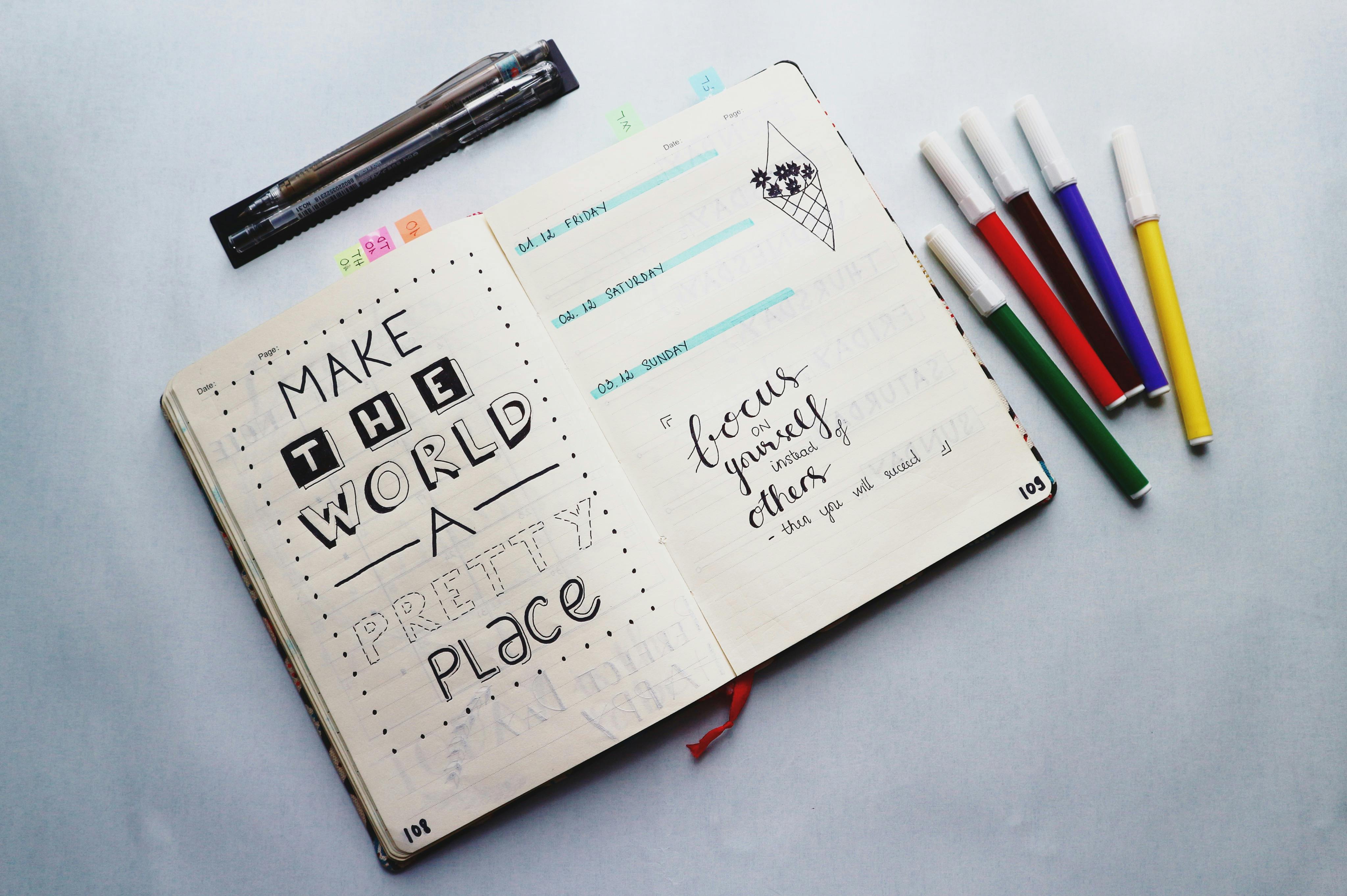Research like a Designer
 peterbstyle - Blog
peterbstyle - Blog
The Importance of Research in Graphic Design
Research is essential for successful graphic design and should be done for each project. It helps designers understand the target audience, market trends, and client goals, ensuring effective communication through visualsResearch also informs creative decisions, guiding choices in colors, typography, and imagery. Ultimately, thorough research leads to designs that are not only visually appealing but also strategic and impactful, benefiting both clients and users.
Designers are required to be effective researchers.
Journal and Record
Buy a journal or create a digital folder to capture your inspirations, such as color palettes, typography, and layouts (anything that captures your attention really). Regularly update the collection to keep your visual library fresh and accessible. This practice enhances your design knowledge, and expertise, and helps develop your style over time.

Discovering New Possibilities Through Experimentation
The journey from a mood board to the final design is unique each time, but experimentation is a vital learning tool. The combination of images you find highlights the designer's progression and thought process, showing how exploration can lead to new insights.
More Example Mood-boards
Here are key points on the importance of research in graphic design:
Broaden Your Outlook: Research exposes designers to diverse trends and styles, fostering innovation.
Example:
The design team at Coca-Cola explored various global trends and cultural influences when creating their “Share a Coke” campaign. By personalizing bottles with common names, they tapped into cultural trends around individuality, significantly broadening their reach and appeal.Informed Decision-Making: Understanding market trends and audience preferences helps designers make strategic design choices that resonate with their audience.
Example
Airbnb conducted extensive market research to understand user preferences for travel accommodations. Insights from this research led them to emphasize unique and local experiences in their branding, helping to position Airbnb as a distinctive alternative to traditional hotels.Contextualization: Research place designs within cultural, social, and economic contexts, ensuring relevance and appropriateness.
Example
The branding for Dove's Real Beauty campaign was developed after extensive research into societal perceptions of beauty. By addressing the cultural pressures women face regarding beauty standards, Dove’s campaign resonated deeply with their audience and contributed to meaningful conversations around self-esteem and body image.Primary and Secondary Research: Using both primary (surveys, interviews - that don’t exist yet) and secondary (studies, articles - that exist) research methods leads to a deeper understanding of the subject matter.
Example
The redesign of Spotify’s interface involved both primary research (user interviews and usability testing) and secondary research (studying competitor apps). This combined approach allowed Spotify to create a more intuitive user experience that catered to listeners’ habits and preferences.Competitive Analysis: Analyzing competitors helps designers find market gaps and create unique designs.
Example
Nike conducts a thorough competitive analysis to identify trends and gaps in the sportswear market. This research led to the development of the Nike Air line, which filled a niche for performance footwear that appealed to both athletes and casual consumers, differentiating it from competitors like Adidas.User-Centered Design: Researching audience needs and preferences enables designers to create user-centric designs that enhance experience.
Example
The UX design team at Slack regularly engages in user research to understand the needs of their users. Feedback from surveys and interviews has shaped features like customizable notifications and integrations with other tools, enhancing the overall user experience and engagement.
Improved Communication: Research equips designers to communicate their ideas effectively to clients and stakeholders, improving collaboration and outcomes.
Example
My Favourite Quotes about the importance of research in Graphic Design:
Adrian Forty
“No design works unless it embodies ideas that are held common by the people for whom the object is intended.”
Joshua Brewer
“Socrates said, “Know thyself.” I say, “Know thy users.” And guess what? They don’t think like you do.”
C.S. Lewis
“What you see and what you hear depends a great deal on where you are standing. It also depends on what sort of person you are.”
Paul Rand
“The public is more familiar with bad design than good design. It is, in effect, conditioned to prefer bad design, because that is what it lives with. The new becomes threatening, the old reassuring.”
Conclusion
Research and experimentation are key in graphic design. They help you know your audience and create designs that connect. Remember, the process is just as important as the result.
Process = fulfilment
Subscribe to my newsletter
Read articles from peterbstyle - Blog directly inside your inbox. Subscribe to the newsletter, and don't miss out.
Written by
